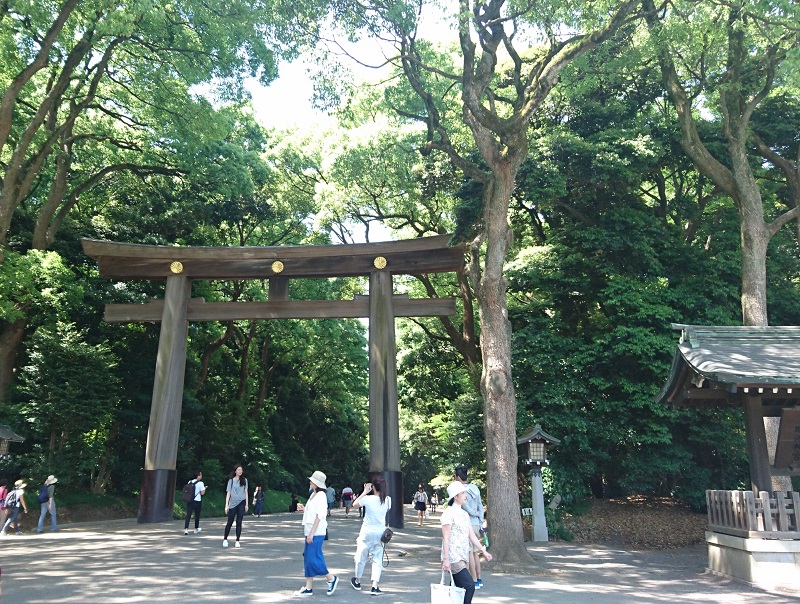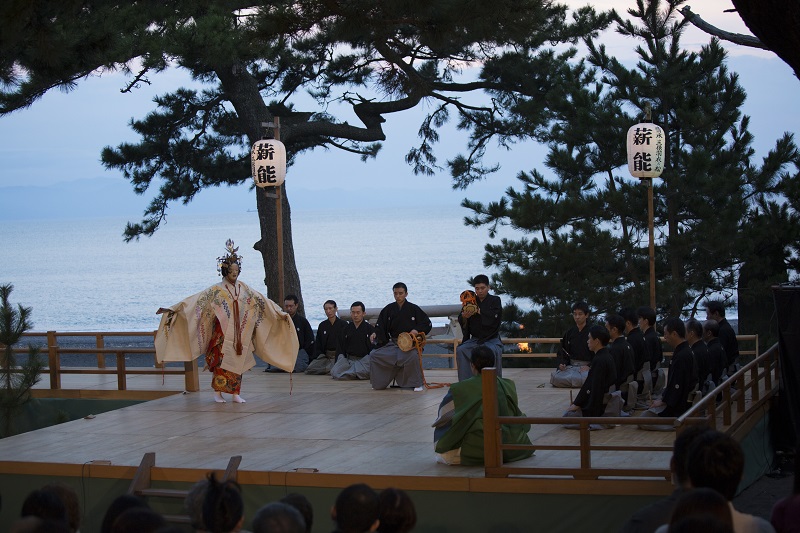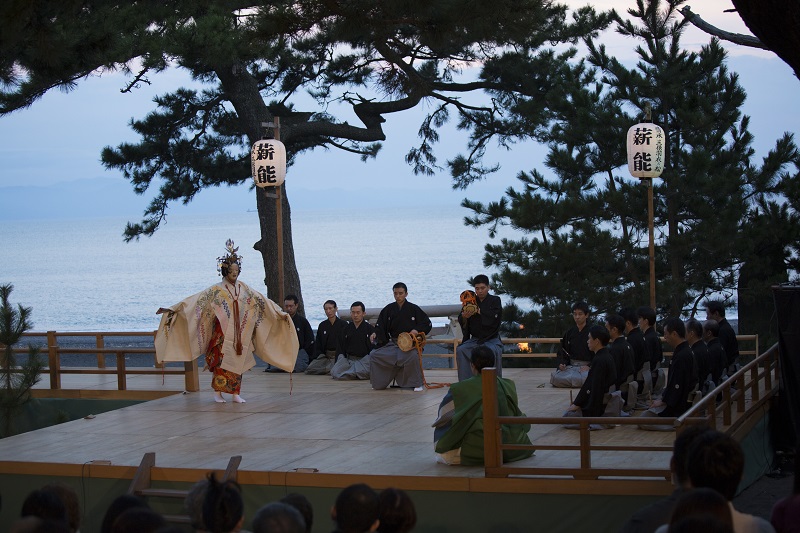About an hour by bus, we arrived at Keio Plaza Hotel, one of the top hotels in Tokyo. The fresh, colorful flower vases in the main lobby immediately caught our eye. What is special about Keio Plaza is that the hotel not only provides accommodation, seminars, and cuisine, but also focuses on introducing the unique cultural identity of the Japanese right in the hotel. Every month, the hotel will introduce exhibitions with different themes such as fans, ceramics, chopsticks, etc. Not only that, guests can also see pictures and paintings of Mount Fuji or cherry blossoms. We also enjoyed the tea ceremony, tried on everyday kimonos, and learned Ikebana flower arrangement right at the hotel.
The tranquility goes hand in hand with the hustle and bustle of the city
After walking around the bustling Harajuku shopping district for young people, we visited the Meiji Jingu Shrine in Shibuya-ku. The Meiji-Tenno Shrine and the Empress Dowager Shōken-kōtaigō were built in 1920 to commemorate the emperor's contributions. Surrounding the shrine is an artificial forest with about 170,000 trees planted by people from all over Japan. Over the past 100 years, the forest has become greener and greener, creating an extremely cool and quiet space. It's strange that just recently, we were overwhelmed by the noise and crowds of the city, but now we can immerse ourselves in a strangely quiet and peaceful space. This is one of the most famous shrines in Japan. On the first days of the new year, the shrine welcomes millions of visitors from all over to pray for good things in the spring.

The birthplace of the famous Noh play Hagoromo
The Shinkansen took us from Tokyo to Shizuoka City. The tour guides were waiting for us there, and after about 35 minutes by bus, we arrived at the pine forest by the coast with more than 30,000 pine trees called Miho no Matsubara. To get there, we had to cross a wooden bridge known as the path of the gods, with two rows of pine trees rustling in the wind on both sides. And then before our eyes were thousands of tall, sturdy pine trees. We came to the pine tree where the legend of Hagoromo (the Fur Coat) originated to listen to the thousand-year-old legend of a fairy performing a court dance to describe the beauty of Miho no Matsubara in the spring, before flying over the top of Mount Fuji back to the fairyland under the full moon. Every October, artists gather here to perform the Noh play Hagoromo under the flickering firelight at night.

Photo source: Hagoromo Matsuri Management Board
Panoramic view of Tokyo at night
We had the opportunity to enjoy the panoramic view of Tokyo at night from the 45th floor, the sky lounge “Aurora” which Keio Plaza Hotel just put into service last December. This is an area for guests to have dinner and enjoy the view of Tokyo at night. From a height of 160m, you can see the Tokyo TV Tower and other skyscrapers with beautiful flashing lights. It is wonderful to enjoy a delicious meal with family and lover in a spectacular setting right in the middle of the capital of Japan.

Leaving the hotel to the gentle, leisurely sounds of the Harp Koto, we told ourselves that we would definitely return here to meet sincere, hospitable friends and immerse ourselves in the space imbued with traditional Japanese art. Sayounara, Tokyo!


































